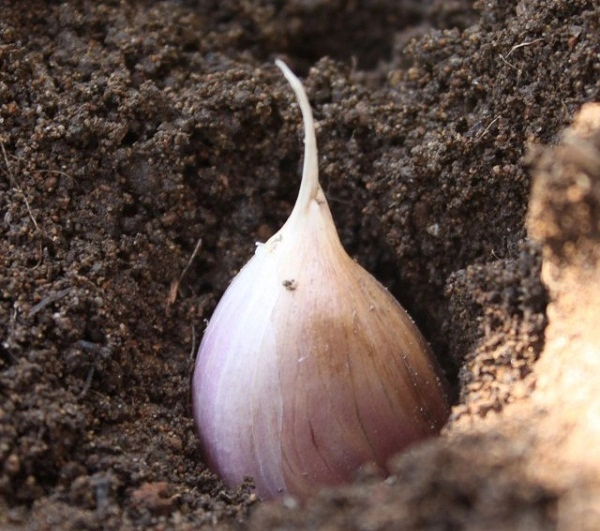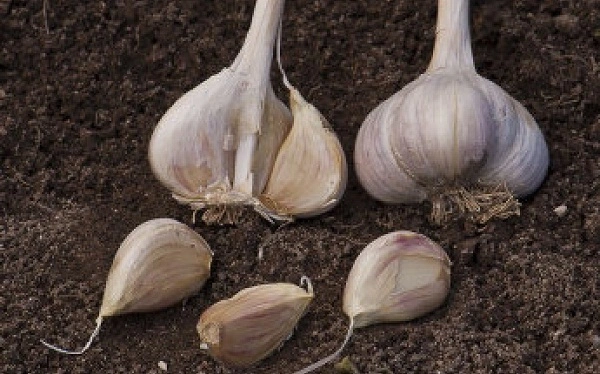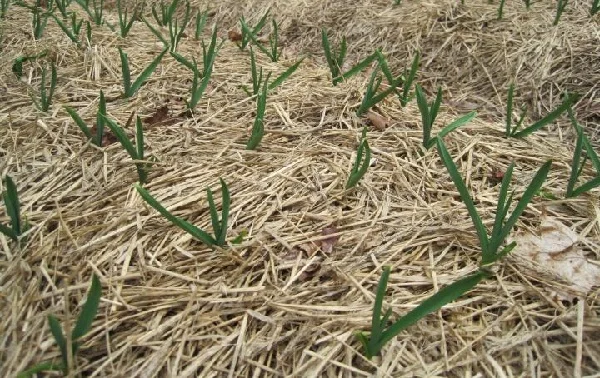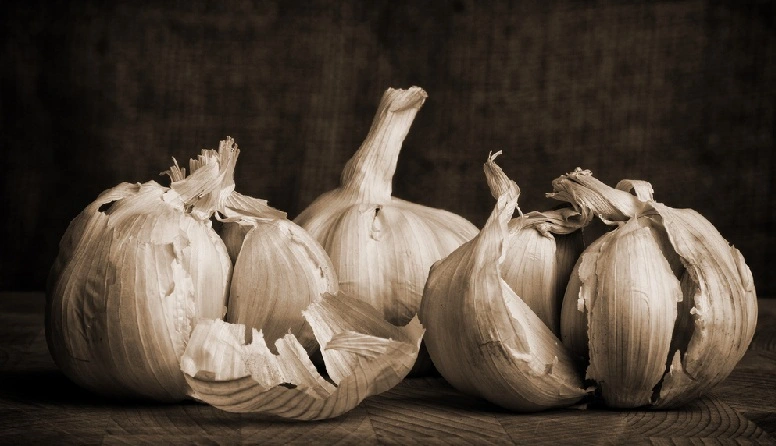Why do you need to plant garlic in the fall? Garlic should be planted in autumn because the time of garlic ripening is 9 months, if we plant garlic in spring, it will not have time to ripen in autumn, the bulbs will be small, and such garlic will not lie down for a long time, it will rot.
So, you need to plant garlic in the fall, before winter, but some gardeners say that you can plant garlic in the spring (so garlic is better stored in winter). The best time for planting garlic – 30 – 40 days before frost, during this time the garlic bulbs will take root, and a good root system is formed, which penetrates into the soil to a depth of 10-15 cm, but no leaves appear. If garlic is planted too late, it will take root poorly and tolerate winter poorly, may freeze, and spring shoots will be weak and sparse. For planting garlic for the winter, choose well-ripened dried bulbs. But if you decide to grow garlic from seed instead of cloves, you can sow them in April.
Preparation of the place and soil for planting garlic. Planting garlic
Choose a place for garlic sunny without tilt or depressions. The best precursors are legumes, pumpkins, greens and cabbage, but after garlic, onions and potatoes, garlic is not recommended, because of the same pests and diseases that inhibit the development of garlic heads.
Follow the alternation of garden crops and combination in the garden.

Garlic should be planted in a separate bed, which should be dug up and fertilized with wood ash (manure can not be made). For garlic, it is desirable and enough 1/2 bucket of ash per 1 sq.m.
Garlic should be planted at least 8 cm between plants and 20-25 cm between rows.
It is undesirable to force garlic cloves by force, because the roots push the tooth to the surface, they can freeze.
After planting, level the surface of the bed, sprinkle the planting site with garlic mulch (leaves, sawdust, straw….) 2 cm layer.
In the spring it is enough to fertilize between rows with nitrogen nitrate. There is nothing more to feed: everything is in the ashes.
Water no more than once a decade.

Selection and preparation of planting material
For planting, choose healthy cloves (dense, soft) in the shell, without dents, cracks, without rot or mold, the outer shell must be intact, if the shell of the garlic clove is damaged or missing, it becomes more susceptible to all diseases and natural adverse factors, and the head of garlic will be poorly stored). The larger the tooth, the larger the head of garlic. Do not plant diseased teeth!
If the cloves on one head of garlic differ greatly in size, have a double tip or two cloves together in one shell – this means that the garlic variety has degenerated and there will be no good harvest of such planting material. Buy a new variety of garlic, or collect and plant seeds – it will rejuvenate the variety.
Processing of garlic cloves before planting
Make a 1% (1 teaspoon per 1 liter of hot water) solution of copper sulfate and soak garlic cloves for 20 – 30 minutes.

Garlic care during the spring-autumn period
Caring for garlic in the spring is to remove the cover material after the threat of night frosts, shifting the soil.
After shifting the soil in the spring, garlic is not treated, or rather not touched. Just cut the garlic arrows.
Pruning garlic arrows. In late June, the garlic begins to throw arrows, which must be broken before they reach a height of 10 cm, otherwise the head will be small.
Harvesting garlic
Garlic should be dug when the lower leaves turn yellow en masse (late July -early August), in dry sunny weather. Digged garlic bulbs are dried in the sun for 4-5 days, cleaned from the soil, cut the roots and shorten the stem to 10-20 cm
Do not let the garlic overtake – its heads fall apart in the soil.

